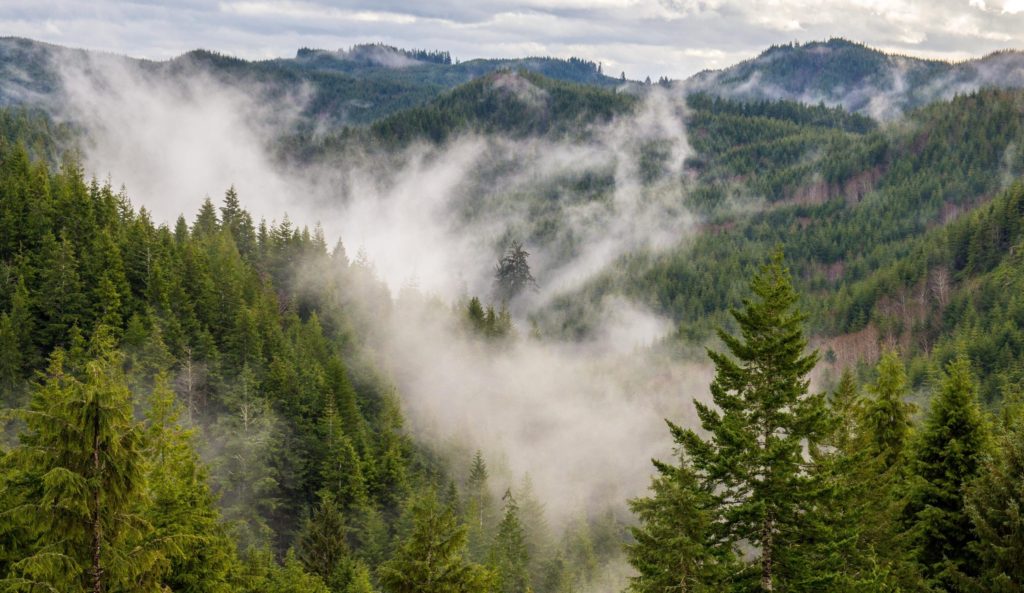May 22, 2022
**This story originally published in The Oregonian
Kate Brown, Chris Edwards and Bob Van Dyk
Brown is governor of Oregon. Edwards is president of the Oregon Forest and Industries Council. Van Dyk is policy director for Oregon and California at the Wild Salmon Center.
Last week, the most comprehensive changes to Oregon’s forestry regulations in 50years were ceremonially signed into law. What is remarkable about the bipartisan Private Forest Accord is not just that it is the most significant update to the Forest Practices Act since 1971, governing the management of more than 10 million acres of private forestland, but how the legislation came to fruition. It’s a story that represents the Oregon Way: old adversaries setting aside their differences and coming together to solve tough problems.
Under the Private Forest Accord, the timber industry and conservation groups reached an unprecedented agreement on the most effective ways to improve protections for the aquatic habitat needed by native fish and amphibians. These changes provide important safeguards for fisheries and clean water, while also securing certainty for forest landowners and economic stability for rural Oregon communities. It is built on the understanding that, by grounding our policy in science-based forest management, we can strike a balance between protecting the health of our forests and creating jobs and economic growth in rural communities. That’s a win-win for Oregon.
This new path forward takes Oregon out of years of gridlock about how private forestlands are managed — marked by countless rounds of heated disagreements at the Capitol, the Board of Forestry, and the local level that led the two sides to file nine competing ballot measures in 2019. In early 2020, they stepped back from the brink by abandoning the measures and beginning negotiations. And in a time of extraordinary divisiveness, the agreement reached by longstanding adversaries signals a moment that should make all Oregonians proud.
The new legislation covers a gamut of actions: increasing no-harvest zones next to streams for shade and water filtration; forest road upgrades that improve fish migration upstream; state-of-the-art computer modeling to protect landslide-prone hillsides; millions of dollars of state and private sector investment for creation of wildlife habitat.
But perhaps most impressive is the process of good faith collaboration and compromise that got us here.
During a time of deep political division, 24 organizations representing two sides with a history of high-stakes conflict set aside their differences and agreed to sit around the table, take a hard look at the latest science, have difficult conversations, and find common ground.
The success we celebrated last week demonstrates how opposing sides can work together on viable solutions to some of the toughest problems facing Oregonians today.
While all Oregonians should take a moment to celebrate – the work is far from over. The rules that implement these changes still require approval by the Board of Forestry and need to be communicated to more than 65,000 forest landowners in every corner of Oregon. This will be followed by years of scientific monitoring and fine tuning on the ground to ensure the changes have the desired outcomes we all set out to accomplish.
The agreement also establishes a framework for future changes to forest practices that keeps the spirit of collaboration alive. This process prioritizes sound science and gives a diverse set of Oregonians a voice in how our forests are managed on a regular basis. This will help to ensure that future generations of Oregonians can continue to enjoy renewable Oregon-grown building products, cold and clean water, wildlife habitat, clean air and the unique recreational opportunities our lush Oregon forests provide.
We’re proud to be a part of this moment, and we invite all Oregonians to join us in celebration and embrace our shared future of collaborative forestry in Oregon. Onward, together.

